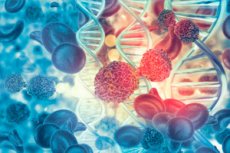New publications
How the environment subtly affects cancer risk
Last reviewed: 02.07.2025

All iLive content is medically reviewed or fact checked to ensure as much factual accuracy as possible.
We have strict sourcing guidelines and only link to reputable media sites, academic research institutions and, whenever possible, medically peer reviewed studies. Note that the numbers in parentheses ([1], [2], etc.) are clickable links to these studies.
If you feel that any of our content is inaccurate, out-of-date, or otherwise questionable, please select it and press Ctrl + Enter.

Cancer occurs because of genetic changes that disrupt the normal functioning of cells. These mutations can be inherited, occur spontaneously as cells divide, or be caused by exposure to environmental carcinogens—chemicals that can cause cancer.
While some carcinogens can be avoided, such as tobacco smoke or excessive sun exposure, air and water pollutants are much more difficult to avoid. It is therefore important to understand which environmental factors are associated with cancer, where they occur, and how they contribute to the development of the disease. This requires accurate measurements of environmental factors, data collection from the most affected populations, and experimental studies of their biological effects.
Researchers at the University of Chicago are exploring these links, using large data sets, cutting-edge technology, and modern methodologies to unravel the complex relationships between cancer and the environment. Their findings are published in the journal Cells.
Exploring Inequality Through an Ecological Lens
Brisa Ashebrook-Kilfoy, an assistant professor of family medicine at the University of Chicago, studies environmental exposure assessment. She leads research into the impact of the “exposome” — the sum of a person’s exposures over a lifetime — on health, including cancer risk.
Her team recently published a paper with a first-of-its-kind analysis of air pollution data collected by the National Institutes of Health's All of Us program. The study involved more than 500,000 people of diverse racial and ethnic backgrounds. The researchers examined the relationship between the concentration of air pollutants in a person's environment and the risk of developing cancer.
Research results:
- Higher levels of air pollution are associated with an increased risk of several types of cancer (breast, ovarian, blood and endometrial).
- Risks varied by race and ethnicity. For example, non-white African Americans and Asians had higher risks of blood cancers, while Hispanics had higher risks of bone, breast, and endometrial cancers.
"We hope this work will support further study of the role of the environment in cancer disparities both in Chicago and nationally," Ashebrook-Kilfoy said.
The Effect of Air Pollutants on Blood Cancer
Dr. Anand A. Patel, an oncologist and researcher at the University of Chicago Medical Center, studies the effects of air pollutants on blood cancers. His research shows that non-white African-Americans and Hispanics are more likely to be exposed to pollutants linked to leukemia than white patients.
Patel and his team found that increased exposure to polycyclic aromatic hydrocarbons and organic compounds in the air was associated with higher disease risks and poorer prognoses.
Cellular and genetic mechanisms of carcinogen action
Professor of Medicine Yoo-In Hye and researcher Mohammed Kibriya use molecular genomic approaches to study the effects of carcinogens. For example, they study the interaction of carcinogens with the epitranscriptome — chemical modifications that regulate gene expression.
The results of their work:
- The development of cell and mouse models allows for detailed studies of the effects of carcinogens such as arsenic.
- Genetic and epigenetic mechanisms that play a key role in the interaction between the environment and the genome have been identified.
"Epitranscriptomics is opening up a new level of mechanisms in environmentally related diseases, including cancer," He said.
Population data and policy implications
Professor Habibul Ahsan, Dean of the Institute of Population and Personalised Health, leads major research efforts at national and international levels. His work integrates environmental, nutritional and genetic data to study the causes, prognosis and prevention of cancer.
One of his 2006 studies found that arsenic in drinking water increased the risk of precancerous skin lesions. The findings helped lower the U.S. Environmental Protection Agency's water arsenic standards.
Conclusion
The University of Chicago study highlights the importance of considering environmental factors in cancer research. The findings could not only raise awareness of the impact of the environment on health, but also influence policies aimed at reducing environmental risks and improving public health.
